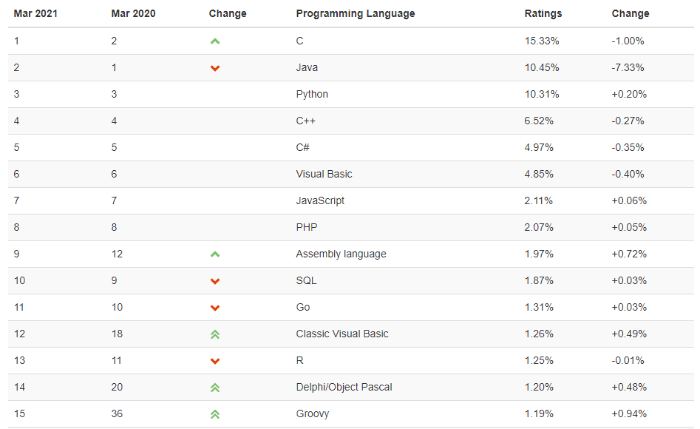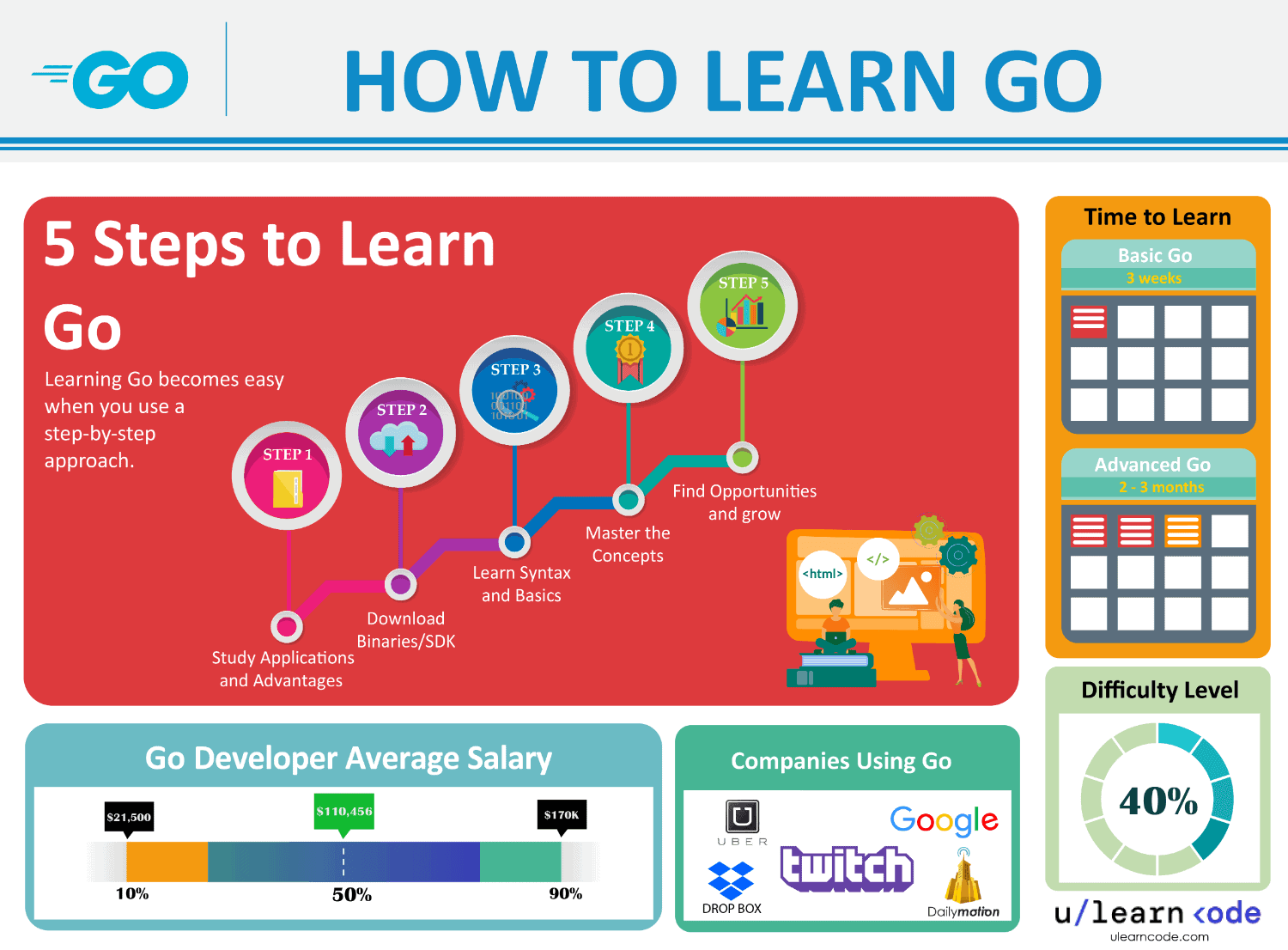Contents
Go is a statically typed language that was created by a team of developers working at Google. It first appeared in 2009 as GoLang, and since then, it has been used by developers worldwide. The three core developers of this language are Robert Griesemer, Rob Pike, and Ken Thompson.
According to the Tiobe Index, Go is the 10th most popular programming language in the world. It has a pretty formidable reputation, and it even competes with Python and Java. It has a number of implementations, but is mainly used in server-side applications.

Beating out Java and Python in speed benchmarks, it is used to develop software that needs fast execution. Python is a pretty vast language with multiple uses however, and it also has a wide range of ML libraries, while Go lacks community support and a number of libraries.
Overall, the language is still in high-demand, as it is used in new emerging industries like big data, machine learning, and network programming. Here’s what you need to know before learning Go.
Is Go Hard to Learn?
GoLang is relatively simpler if we compare it to other statically typed languages like Java and C++. It inherits many qualities of the C language, which also makes it clearer and easier to understand. We can say that its difficulty levels fall somewhere in between Python and C++.
Go is relatively a bit harder than Python, but still, it’s fairly easier than other high-level languages. The basic concepts are pretty easy to grasp, and if you are already familiar with C, then you will be able to understand its programs with no problems.
Static typing also allows the compiler to catch errors and bugs, just like C language. So its strong typing is another plus point that makes Go easy and reliable for beginners.
How Long Does it Take to Learn Go?
The language syntax is simple and understandable. A new developer can easily learn GoLang basics in just a week. If you have any prior experience with C, Java, or C++ programming, then it is also possible to pick up basic concepts and syntax rules in under 24 hours.
Just like other programming languages, it takes time to master. It can take almost a year for a Go developer to become proficient enough that they could write code in an idiomatic manner.
This expected time period is only for those people who take a genuine interest in learning a language with consistency and effort. Every Go developer needs to practice their skills in real-world applications to
reach the master level.
How to Learn Go

This is a very beginner-friendly language, with amazing features to build different types of speed-oriented applications. If you are eager to become a Go developer, then these should be your first five steps:
#1: Study Applications & Advantages
So why should one learn Go when there are many other powerful programming languages available like Python and C++? The answer lies in the speed of GoLang. It is relatively faster and more reliable than Python, especially in server applications.
As the reason for learning Go is clear, your next step should be to learn about its applications. GoLang has numerous applications in system and network programming, software applications, big data, audio, and video editing, etc. It is also expanding with new and better machine learning libraries.
Developers prefer speed and the language is getting popular in the development of modern web pages, backend systems, and software applications.
#2: Download Binaries/SDK
Once you have developed a good understanding of the language, it’s time to download the binaries and set up an environment where you can write code.
Simply head to the GoLang DL page and download the stable version according to your own operating system. Install and set up your workspace to write your first “Hello World” script. If you want to check whether your environment is working or not, then simply type the following:
|
package main
import “fmt”
func main() { fmt.Println(“Hello World”) }
|
Execute your written code by using go run <your filename.go> and if your print statement is successfully executed, then congratulations, you are all set.
#3: Learn Syntax & Basics
Syntax is the foremost thing you have to understand and learn. GoLang has a fairly simple one that is derived from the C language, but it’s much easier. If you want to learn the straightforward way, then try these easy GoLang courses for complete guidance.
So what do you really need to learn in order to cover the basic concepts? Here’s a list:
- Data Types
- Control Statements
- Functions (defining and declarations)
- Loops
- Pointers
- Error Handling
- Packages
- Creating data structures
GoLang documentation is another great source to get started, but if you want to utilize other resources, here are your options:
- Learn Go Programming by freeCodeCamp
- GoLang Crash Course by Traversy Media
- Go Basic Tutorial by Telusko
#4: Master the Concepts
To become a GoLang Pro, you need to practice on a daily basis. This practice is not just limited to typing the same statements again and again; you have to build real-world applications utilizing the language to solve a particular problem.
It normally takes a year for a Go programmer to become an expert developer who can proficiently work on numerous types of applications.
#5: Find Opportunities & Grow
Many companies hire Go developers because they need to build fast and steady applications. Look out for such opportunities on LinkedIn and also keep an eye on freelancing jobs to sharpen your programming skills.
If you are stuck somewhere, you can head toward Go communities and forums to seek professional programmers. Here are a few such forums and sites:
To Sum Up
GoLang was on top of HackerRank’s 2020 Developer Skills Report, where many developers showed interest in learning Go as their next favorite language.
It might just directly compete with Python in the future, and while it currently lacks community support, it will surely build up with more and more developers joining in.